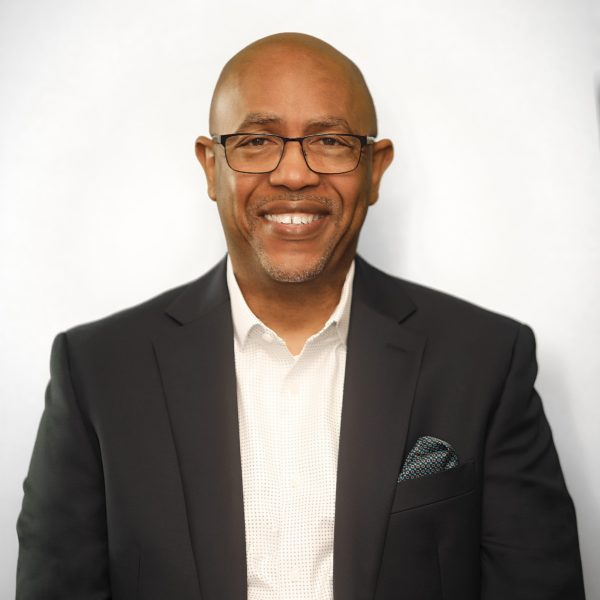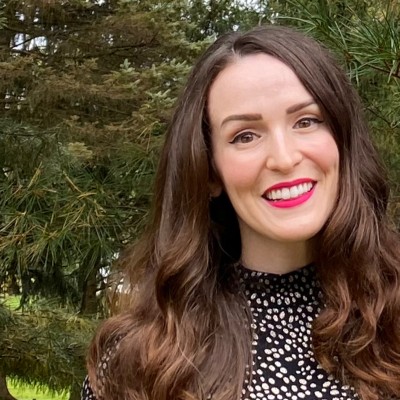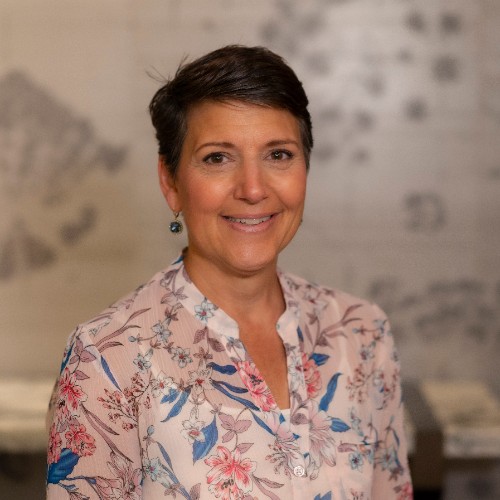Book Club: Roderick Jefferson on the Blueprint to Sales Enablement Success
2.5K Views | 22 Min Read
Olivia Fuller: Hi, and welcome to Book Club, a Sales Enablement PRO podcast. I’m Olivia Fuller. Sales enablement is a constantly evolving space, and we’re here to help professionals stay up to date on the latest trends and best practices so they can be more effective in their jobs.
Sales enablement as a function has undergone massive transformation in recent years, and as it’s continued to be elevated more and more as a strategic business function to empower revenue growth, practitioners and business leaders want to know what good looks like. But in sales enablement, there’s no silver bullet or secret sauce that will lead to success for everyone. However, there are some core components of successful sales enablement that professionals can apply to their own organizations to drive meaningful outcomes.
Roderick Jefferson’s new book, “Sales Enablement 3.0”, covers just that, and I’m so excited to have him join us to talk a bit more about his book. Roderick, can you tell us a little bit about yourself and your background?
Roderick Jefferson: First of all, thank you very much. I’m absolutely honored to be here and can’t wait to dive into this. A little bit about myself, I am the consummate salesperson. I started as a BDR, so I’ve got a lot of love for them. I understand that role and how difficult it is. I got promoted into AE, went to president’s club, and all that fun stuff, and then got promoted to sales leader and promptly turned it down. I know it sounds odd, but it’s because I figured out that I absolutely loved the process of selling versus actually taking down big deals. I stepped at that point into my first training role and that was years ago with, at T&G.
I’ve been fortunate since then. I have run enablement at Siebel Systems, NetApp, eBay, HP, Oracle, Salesforce, and Marketo. While that was a great run, I decided I was going to be a masochist and go out on my own and give it a shot as a consultant, which went really well. I had a great time for about three years consulting and helping companies. I started in the SMB space and then slowly got pulled further upstream by some larger clients and then realized done everything I wanted to do as a consultant, and it was time to come back in house. As of today, I am the vice president of field enablement at Netskope, which is a network security company.
OF: Fantastic. As I mentioned, your new book is titled “Sales Enablement 3.0”.
I’m wondering, can you just tell our audience a little bit about what “Sales Enablement 3.0” is all about? How have you really seen sales enablement evolve over the last few years, given your wide breadth of experience, and then what do you think is really the current state of the function right now?
RJ: Well, I’ll go backwards and then I’ll come back to today if I can. If you would’ve asked me that as a couple of years ago, I would have said sales enablement was about breaking the complexity of sales into practical ideas, through scalable and repeatable processes that will lead to accelerated speed to revenue, increase seller productivity and customers for life, and then ultimately leading to increase revenue. Now, to answer your second question and why I wrote the book, we have completely changed now. I believe that sales enablement is more of an innovative approach focused on increasing sales productivity, through systematic, personalized, and collaborative approaches, designed to support the buyer to fuel what I’m calling the conversation economy.
There was a time where we could talk about how do we help them increase productivity, decrease pain. Well, COVID changes everything, as we know. Even the pre-COVID things were starting to shift to where enablement now has become more of a strategic function that is woven into the fabric of companies. We should be a part of the go-to-market strategy. We are actually a differentiator if done correctly for both internal and external messaging and positioning around the key differentiation, competitive advantage, and business value of a given company. We’ve stepped away from what I call the kiddie table now. We sit squarely at the strategic table at a C-level. It’s interesting, the last three companies I was at, sales enablement and now field enablement was actually one of the top five initiatives for the overall company, which really speaks volumes to how much we moved away from being just training.
OF: Absolutely. I could not agree more that sales enablement really must be a strategic function and viewed that way by the C-suite and given that seat at the table. You described “Sales Enablement 3.0” as both an art and a science. I’m curious, what do each of those aspects look like and enablement today – the art and the science – and why is it important to have both working in tandem in order to be successful in sales enablement?
RJ: Fantastic question. When I was putting this together, I was like, how do I bring both the art and the science together that I’ve seen over the last few years? I realized something really quickly. There are no silver bullets. There’s no single approach that’ll guarantee success. However, there is a formula, just like any other successful process, program, or tool that requires a combination of practical application, trial and error, mixed with a lot of conversations with different sales leaders to understand what their wants, their needs, and their expectations are. You’d take the practical application piece and you tie it together with learning how to and how not to.
You look at it from the processes, programs, platforms, tools, all of those things that we do, but there’s another piece and here’s where the art comes in. Think of an orchestra. you’ve got strings, percussion, woodwind, brass, and they’re all trying to play the same song. Sometimes the notes are out of key. They’re out of faith. Now, let’s align that to the business units: you’ve got marketing, product marketing, product management, HR, engineering, sales, and enablement. We’re all trying to do the right thing for the customer, but most of the time there’s a lack of collaboration or coordination. Sometimes we’re stepping over each other. Sometimes multiple messaging is going to the same prospect or customer. Until – just like the orchestra – internally, one person or one organization that I call sales enablement steps up and taps the stand and all of that chaos before now becomes a beautiful piece of music. There’s the art piece of it.
OF: That is a fantastic analogy. I love that orchestra. You mentioned this also, that your book lays out a formula or blueprint for building a world-class enablement organization. What are the core components of an effective enablement strategy in your opinion?
RJ: I think there are eight pieces and they fall into three categories. I look at it as strategy, architecture, and then reinforcement. In the strategy piece, it’s about defining and building a charter that outlines and defines what enablement means to your company and what it doesn’t mean. I don’t mean this isn’t my job. I’m looking at it more of here’s what we are best at what we bring the largest amount of value. Here’s how we can collaborate. Also, here’s how we can be what I call the translators of dialects and languages.
Let me explain that briefly. We go out and we meet with different customers and prospects. We come back and we say, “product marketing, absolutely love the first call pitch. Problem is, slide eight gets a little fuzzy. Can we either smooth that out or remove it?” Then we come back to product management and say, “we’ve heard this same request for a feature 10 times. How do we get that moved up on the release cycle?” Then, step over to sales and talk to them about not only our ICP, or ideal customer profile, but because we don’t have enough acronyms, I’ll add another one. IEP — what’s our ideal employee profile for our sellers? Because as companies grow, the maturation cycle requires a different type of seller. You may have that volume velocity sell upfront, and then as you grow, you’ve got more complex and or larger big-ticket items. You need a more mature seller. Then we go to HR and say, “as we are out recruiting, here’s what we’ve worked with sales to define as a new IEP. Here’s the new look for the recruiting piece.” On that point, I think enablement has to be a part of the overall interview process as well.
Then you’ve got to look at how do you make learning a marathon and not a sprint? And I’m talking about everything from talent acquisition, role-specific onboarding, to a business acumen at a role-specific level, to coaching and reinforcement for your first and second-line managers on two levels: one net-new manager for the first time and second, the legacy manager or that old dog that we’ve got to teach new tricks because obviously we are all looking at things differently now.
Then you’ve got measurements and I’m not talking about smiley sheets and butts and seats like we used to look at. I’m talking about what are we doing to impact revenue-generating metrics. Then finally, you’ve got to have a succession plan in place because how are you going to get folks from that individual contributor level to leader? I don’t necessarily mean just sales leader. They may figure out along their journey that, “Hey, I want to go look at product marketing or product management”, or “I may want to go look at this thing that we’re calling sales enablement. I think that fits me better.”
OF: I love that holistic view of all the possibilities of how salespeople can grow in their careers and how sales enablement can support that. You did mention a few core partners that sales enablement works with in the business and going back to that orchestra analogy as well, one of those core leaders is the sales leader. You talk about the importance of really understanding the needs and expectations of sales leaders to be able to design effective enablement programs. What are some of your best practices for really building alignment with sales leaders?
RJ: It may sound corny and simple, but I start every conversation with sales leaders with a single three-point question. Do you want me to listen, do you want me to coach, or do you want me to fix? The reason I do that is because it allows me to put on the right set of ears, if you will, and hear what it is that they need. Secondly, it shows them that this conversation is all about them. The second is I approach sales leaders with a simple three-part process. That is listen, learn, then lead. Too many times as sales enablement practitioners, we want to dive in because we’re fixers by nature, but that may not be what that sales leader needs.
Then the third piece is when I’m building out a seller enablement org, my goal is that everyone on my team has carried a bag in some sort prior to going into enablement, whether you’re a BDR, an AE, a CSM, you’re in channels, or wherever you may have been. The reason is there’s an enormous amount of credibility by saying I’ve walked in your shoes and I understand what’s going on. Plus, it raises our BS filter a lot higher with sales because we’ve done that job. We can go, “that’s not going to be two weeks. It’s more like four days. Come on now.”
OF: Yes. I love that point about really having credibility with sales leaders and one of those ways that you can also build credibility is just by furthering the sales leader’s strategic goals and their priorities. In your opinion and in your experience, how does sales enablement help further the strategic priorities of sales leaders?
RJ: First and foremost, don’t be afraid to say, “I don’t know”. We don’t have the answers to everything and we’re not the fix to every problem. We are a matter of fact, we’re not the break fix organization at all. Back to credibility, when you say that to a sales leader, most people think, “Oh, no, I’m supposed to know this. I can’t say, I don’t know.” No, no, no. What it does is it gives you credibility because it gives you an opportunity to learn from them. It also forces you to be the perpetual learner and listener to learn from the sales leader.
The next is talk to them in the language that they speak. Don’t try and get them to speak sales enablement jargon. Too many times, we throw all of these cool acronyms out thinking they’re going to pick it up. No, listen to them as your internal customer, not your stakeholder. That’s because if their stakeholders, that means you’re beholden to them as an internal customer. You’re doing everything to ensure that they are successful and satisfied, but it also has to be mutually equitable. That’s where the third thing comes in. You cannot be a sales scribe. You cannot be seen as sales support. You cannot be seen as the break fix organization. You need to outline what your value is that you bring and agree with the sales leader upon what enablement means in your company at this particular point of the maturation cycle. Come back on a regular basis to make sure that as the company is changing messaging, positioning, competitive landscape, hiring acquisitions, those kinds of things, that you revisit what that definition means and agree upon that so that when you have your deliverables – which should be no more than five, because above five, you’re setting yourself up for failure – when you have those deliverables, you can always come back and you have a baseline with them. That way, the goalpost doesn’t move when you think you’re about to jump into the end zone and score.
OF: Absolutely. You actually touched on something that I want to dig a little bit deeper into, which is really just defining your deliverables and how you’re going to measure results so that you really have that alignment. What are some of the core metrics that you recommend looking at in order to really just prove the business impact of sales enablement?
RJ: I love that question, because for so long, we have been seen, as I said earlier, as smiley sheets and butts and seats, and those days have changed. If you don’t have hard line metrics, then you don’t have a lot of value to the organization or to sales in general and they will completely cut you off. To that point, I believe there are two types of enablement metrics. First, there are the metrics that we influence and then there’s the others that we own. Let me say this as a caveat, if you’re in enablement and you say that you’re driving revenue, I call BS. Unless you’re carrying a bag, we are influencing. We do not drive revenue. Let me say that again. We influence and impact, we do not drive revenue unless you have an actual number on your head that your team is responsible for.
On the influence side, it’s things like accreditation completions, average deal size, collateral frequency, usage, deal velocity, pipeline created, closed deals, product mix, quota attainment quarter over quarter, annual time to first close, win and loss rates. We impact those with our processes and programs and tools. The things that we actually own are things like the accreditation process, the biannual needs analysis, the program-based surveys, the usage stats, the communications, the e-learnings, all of the pieces that come together that we help. As I talked about, there is a journey and marathon of learning earlier that we own.
Then we come back on the back end with reinforcement and that reinforcement is working directly with and partnering with the sales leaders to ensure that they own the adoption, the execution, and most importantly, the positive modeling of all of those programs that we have. We can give you the best, most world-class programs, processes, platforms, and tools in the world. What if the sales leader first and second line doesn’t buy into it and own it? We’re dead in the water.
OF: Yeah. That’s a great way to think about it, the metrics that sales enablement has influence over versus those that enablement can own. You are very forward-thinking in sales enablement, so I’m curious, how do you think the function will continue to evolve in the next year and possibly even beyond that?
RJ: Phenomenal question. I’ll give a little book teaser. Don’t be afraid of AI, make it your friend. It’s everywhere. I think that AI is going to play a larger piece and role in sales enablement than ever before going forward. I also think that the metrics that I just outlined there are separate metrics for sales and separate metrics for CSM. Those are going to be your best friend. If you don’t have dashboards right now, start getting them together out of your CRM. Metrics are going to play a bigger role.
I also believe that we’re going to become more and more ingrained in the fabric and the culture of companies, because I’m seeing more and more CEOs now that are putting enablement on their top priority lists and their deliverables list.
The next is build a field enablement council as I call it. That is, bring all of the players together. The product marketing, marketing, product management, HR, bringing them together once a month, once a quarter to make sure that everyone is on the same page. You have to become the orchestra master. That is going to become more and more important because the changes in landscape from a competitive perspective, mergers and acquisitions are going to play larger piece in what enablement actually does. Determine where you are in the maturation cycle of your company, and start building for where your CEO is trying to take you. Start that build today. Don’t be afraid of scaling automation and don’t be afraid of AI. Those are going to be an integral part of enablement going forward and play an even bigger piece. At one company, I was even reading out to the board, what our metrics were on a quarterly basis. I believe that enablement is going to have a higher profile in companies than ever before.
OF: That is fantastic advice, and I love your perspective on the future of enablement. Roderick, thank you so much for taking the time to talk to our audience today about your book.
RJ: Thank you for having me. Again, I’m absolutely honored and I am dying to get that baby that I call my book out there to the world so that they can see and grasp and my hope is start executing on “Sales Enablement 3.0”, which is I call the blueprint sales enablement excellence. You want to get there, go grab the book
OF: To our audience, you can find Roderick’s book now on Amazon. Thanks for listening. For more insights, tips, and expertise from sales enablement leaders, visit salesenablement.pro. If there’s something you’d like to share or a topic you’d like to learn more about, please let us know. We’d love to hear from you.
You can purchase “Sales Enablement 3.0” now on Amazon here.
















